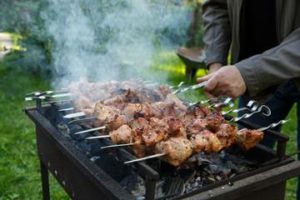
Art Therapy
“One of the basic rules of the universe is that nothing is perfect. Perfection simply doesn’t exist…..Without imperfection, neither you nor I would exist” ― Stephen Hawking




If you do not recognize this word do not worry. Neither did I until a week ago. In a nutshell, “intersectionality” describes how individual characteristics – including race, class, gender, age, and more – “intersect” with one another and overlap. It also asks us to consider how this affects people’s different experiences of both marginalisation and privilege. The term is used currently by social workers who claim that it helps them think of people in a multifaceted way. It is a framework for addressing inequalities. I came across this concept in an ethics course which I participated in, and it made me curious to explore the subject and find out if it actually makes a difference in the way I look at myself and my world.
The way each one defines themselves depends on the circumstances we encounter and the particular need for definition. As for me, I am a woman, a wife, a mother, a grandmother, an art therapist, an avid reader, a singer in a choir, a jew, an Israeli, a Canadian, a volunteer, a bereaved sister, a holocaust survivor, an avid learner, a nature lover, a disabled person, a community activist, a person of higher education, a supervisor, a photographer, a potter, a homemaker, octogenarian….I could perhaps find some more parts of myself. I wrote the list as it came to me randomly, but if you think of discrimination or advantages, it is easy to see how I could fit into many groups.
By coining the term “intersectionality” in 1989, legal scholar and civil rights activist Professor Kimberlé Crenshaw wanted to draw attention to the long-standing interlocking inequities that many women of colour had been fighting for centuries. She recently described her use of intersectionality as “a prism to bring to light dynamics within discrimination law that weren’t being appreciated by the courts”. Considering individuals from an intersectional perspective is a critical component in creating diverse and inclusive societies across the globe. People’s interlocking identities illustrate the diversity that exists within any broad social group (e.g., women, immigrants, trans people, etc.), and where there are similarities and differences in experiences within these groups.
 As Jewish people celebrate the Passover holiday, we are recalling the slavery in ancient Egypt and the exodus to freedom which created the Jewish nation. If we observe the formation of the Jewish people, we can see intersectionality within the tribes. The structure of a tribal society with some privileged tribes and others becoming the workers prevailed for generations. Within the structure women, minors, foreigners, were the oppressed. There were always divisions between rich and poor, but there was also an obligation to take care of each other. Up to the emancipation era, the Jewish communities were treated with contempt and hatred. Antisemitism and persecution were the lot of the majority, except a few privileged individuals which were useful for the Gentile communities.
As Jewish people celebrate the Passover holiday, we are recalling the slavery in ancient Egypt and the exodus to freedom which created the Jewish nation. If we observe the formation of the Jewish people, we can see intersectionality within the tribes. The structure of a tribal society with some privileged tribes and others becoming the workers prevailed for generations. Within the structure women, minors, foreigners, were the oppressed. There were always divisions between rich and poor, but there was also an obligation to take care of each other. Up to the emancipation era, the Jewish communities were treated with contempt and hatred. Antisemitism and persecution were the lot of the majority, except a few privileged individuals which were useful for the Gentile communities.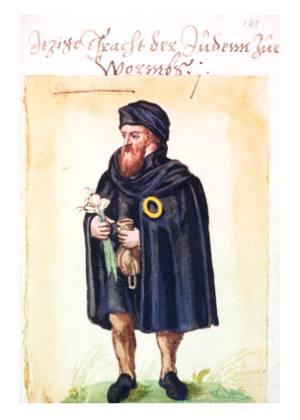 The color yellow, whether in a circular patch or a hat had to be worn by Jews as an identifier already in the twelve’s century. The only difference in the Nazi regime was changing the shape of the badge to a star of David. Of all the Jewish Holidays, the Passover celebration was a visible trigger to unleash pogroms and blood libels.
The color yellow, whether in a circular patch or a hat had to be worn by Jews as an identifier already in the twelve’s century. The only difference in the Nazi regime was changing the shape of the badge to a star of David. Of all the Jewish Holidays, the Passover celebration was a visible trigger to unleash pogroms and blood libels.
By being visibly different from the majority, Jewish communities all over the world, except in Israel, endangered themselves by celebrating Passover which fueled the rise of antisemitism.  But in Israel, it unifies most of the Jewish population for the duration of the holiday. This does not mean that everyone celebrates the same way. Within the Jewish inhabitants of the country there are communities that have vastly different ideologies and ways of life. The recent demonstrations against the government’s attempts to legislate discriminatory laws against race, gender, nationality, ability and socioeconomic status minorities, point clearly to ideological differences. The Passover story is viewed by the anti-government demonstrates as a beginning of democracy, while the governing coalition views it, in my opinion, as a theocracy. There is a vast difference between majority rule and democracy which protects the civil rights of all citizens.
But in Israel, it unifies most of the Jewish population for the duration of the holiday. This does not mean that everyone celebrates the same way. Within the Jewish inhabitants of the country there are communities that have vastly different ideologies and ways of life. The recent demonstrations against the government’s attempts to legislate discriminatory laws against race, gender, nationality, ability and socioeconomic status minorities, point clearly to ideological differences. The Passover story is viewed by the anti-government demonstrates as a beginning of democracy, while the governing coalition views it, in my opinion, as a theocracy. There is a vast difference between majority rule and democracy which protects the civil rights of all citizens.
On the week after Passover the country stood united for an entire minute while sirens blasted throughout the country. Everyone stood still for 60 seconds to remember the dead and honor the survivors of the Holocaust. A unity of memory. Personally, I experienced a moving event, when I was invited to tell my story of survival and resilience during the second world war. My sister’s great granddaughter invited me to tell my story to grade 6 and 7 students at her school. I was amazed at the level of listening and depth of questions of the students. One youngster asked how I remembered so many details and told a coherent story, since I was only 3 years old when we fled Romania in 1944, still during the war. I explained that the body remembers, and when you are triggered by some event, the memory appears. 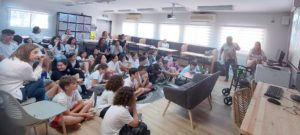 As you grow older and work through your trauma the story is more coherent and complete. There were more questions but we ran out of time, and I mentioned that the answers are not the most important. The questions are important, since they lead to research and mind development by looking for answers.
As you grow older and work through your trauma the story is more coherent and complete. There were more questions but we ran out of time, and I mentioned that the answers are not the most important. The questions are important, since they lead to research and mind development by looking for answers.
These days we are all looking for answers. Answers to how the current situation has developed in our country, and how we can bridge the chasm that developed within society. Perhaps if we employ an intersectionality model of inclusion instead of division, we could create a society that cares for each other and respects differences. At the Memorial Day for the soldiers and civilians who sacrificed their life in order for the country to exist, the sirens went off again for a full moment of silence. Drivers on the road stopped to stand beside their car, shoppers stood beside their carts, and everyone throughout the land stood still for a moment of silence. A moment of unity. Perhaps we need to extend the time of the siren to an hour. Perhaps we can bring curiosity and compassion and respect towards neighbors instead of suspicion and rejection. What we all have in common is our humanity, and intersectionality in which people would look each other in the eye, smile, even hug, and share who we are.
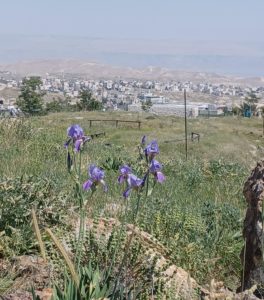 On the 75th anniversary of the state of Israel our small family in Israel walked up a steep hill in Jerusalem, to a little observation place lovingly dubbed “Mitzpetel” (A play on the word Mitzpe, which means Outlook, and MitzPetel-Raspberry juice, a favorite children story book). Jerusalem opened up to us in all it’s glory, and we were able to see the Dead Sea to our southeast. At every shady spot along the way there were families and friends gathered around barbecues, the smoke and smell wafting and spreading in the wind. Mangal, the name used here for barbecue, should replace the official name of the holiday. It is no longer Yom Haatzmaut, Independence Day, it has become Mangal Day. Perhaps this is what unifies us. Perhaps it is a much better idea after all, sharing food, going out to nature and coming together as family and community is much more unifying than political and even
On the 75th anniversary of the state of Israel our small family in Israel walked up a steep hill in Jerusalem, to a little observation place lovingly dubbed “Mitzpetel” (A play on the word Mitzpe, which means Outlook, and MitzPetel-Raspberry juice, a favorite children story book). Jerusalem opened up to us in all it’s glory, and we were able to see the Dead Sea to our southeast. At every shady spot along the way there were families and friends gathered around barbecues, the smoke and smell wafting and spreading in the wind. Mangal, the name used here for barbecue, should replace the official name of the holiday. It is no longer Yom Haatzmaut, Independence Day, it has become Mangal Day. Perhaps this is what unifies us. Perhaps it is a much better idea after all, sharing food, going out to nature and coming together as family and community is much more unifying than political and even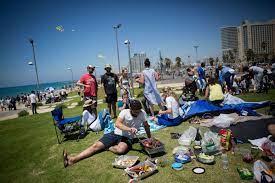 .
.
